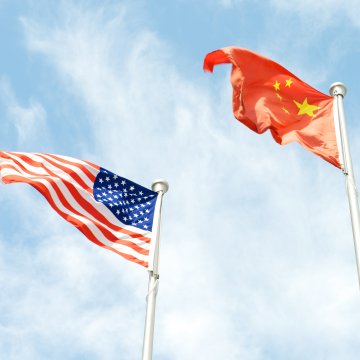
China buys more; will it be enough for Phase One?
U.S. agriculture was a leading target of retaliatory tariffs by China, formerly the top buyer of farm exports.
by Chuck AbbottThe Phase One trade agreement with China, one of President Trump’s top trade achievements, calls for Beijing to buy huge quantities of U.S. food, agricultural, and seafood exports. Sales of soybeans, cotton, pork, corn, sorghum, and wheat are stronger than a year ago, but an Iowa think tank predicts China will buy only half of the amount needed to satisfy the agreement.
U.S. agriculture was a leading target of retaliatory tariffs by China, formerly the top buyer of farm exports. The Trump administration sent $23 billion in payments to farmers and ranchers to mitigate the impact of trade war on 2018 and 2019 production. The USDA is due to update on Friday its estimate of exports to China this fiscal year, now a relatively subdued $14 billion, compared to the average of $21 billion a year before the trade war.
“We predict China will import $18.60 billion in agricultural products from the United States in 2020, far behind the Phase One target of $36.5 billion,” wrote economists Xi He, Dermot Hayes and Wendong Zhang in a policy brief from the CARD think tank at Iowa State University.
“There is still room for optimism,” they said and pointed to signs such as more attractive prices for U.S. commodities and China’s plan to expand its national grain reserve. “China will likely accelerate its purchases in the rest of 2020. However, overall trade prospects are still quite uncertain and depend on COVID-19’s impact on various logistical channels.”
READ MORE: Ag trade in a post coronavirus world
White House economic adviser Larry Kudlow expressed ambivalence to reporters about the agreement with China while saying the United States-Mexico-Canada Agreement, taking effect on July 1, would boost the U.S. economy. “I think if the Chinese implement their side – I don’t know that they will – but if they do, we are going to see a big export boom there, too,” said Kudlow at the White House. “I think the president’s negotiation of these trade deals is a big economic plus, and we’ll see more of that later in the year and next year.”
President Trump, who blames China for the pandemic, said the administration was “doing something now” to respond to Chinese restrictions on democracy in Hong Kong, with an announcement to come soon. “I think you’ll find it very interesting but I won’t be talking about it today. I’ll be talking about it over the next couple of days.”
China bought a comparatively small $5 billion of U.S. agricultural exports and $37 billion of agricultural exports from other suppliers, perhaps a lingering effect of the trade war, during the first three months of this year, said the CARD economists.
Exporters reported the sale of 258,000 tonnes of U.S. soybeans worth roughly $80 million on Tuesday, the latest in a series of large purchases. USDA data show that through May 14, China purchased 14.5 million tonnes of U.S.-grown soybeans during the marketing year that began last September 1. While 1.2 million tonnes larger than the same point in the previous marketing year, it is less than half of the 36 million tonnes that were purchased by mid-May during the 2017/18 marketing year, before the trade war took hold.
Similarly, USDA’s export tallies show larger pork, cotton, corn, wheat, and sorghum sales to China during the current marketing year than the previous trade year. Pork and cotton were the only commodities with larger sales in the current year than before the trade war. Pork exports to China are eight times larger, a reflection of China’s appetite for pork. It lost a large portion of its hog herd to an epidemic of African swine fever in 2019. China is the world’s largest pork consumer.
READ MORE: More U.S. ag products eligible for export to China
Chinese and U.S. officials have said they are making progress in implementing Phase One, through steps such as removal of trade barriers to U.S. goods. “China is a market of tremendous potential for U.S. agriculture, and these actions will help U.S. exporters expand their sales there,” said Agriculture Secretary Sonny Perdue last week.
China agreed to buy $200 billion of various U.S. goods and services, including food and agricultural products, as part of Phase One. Premier Li Keqiang told Chinese lawmakers, “We will work with the United States to implement the Phase One China-U.S. economic and trade agreement,” reported Forbes on Friday.
President Trump said in February that if “farmers need additional aid until such time as the trade deals with China, Mexico, Canada, and others kick in, that aid will be provided by the federal government.” That was before the coronavirus became pandemic. The USDA opened farmer enrollment on Monday for $16 billion in coronavirus aid to producers — larger than a single year of trade-war payments.
